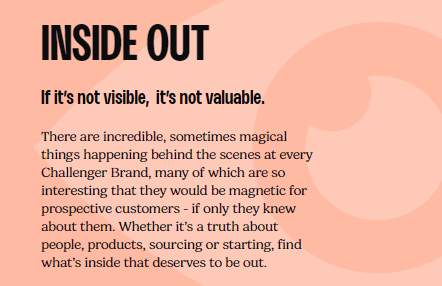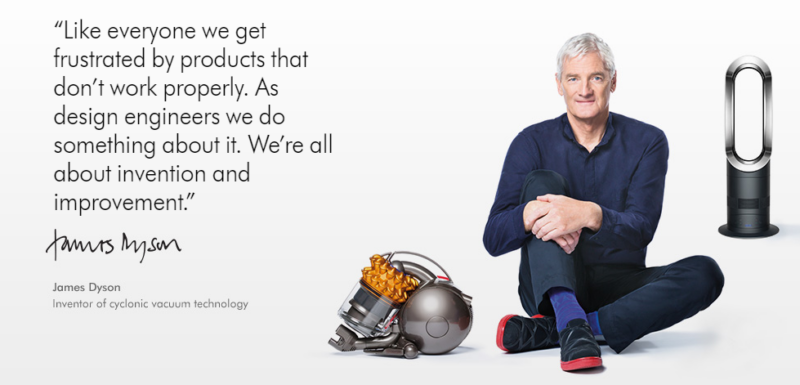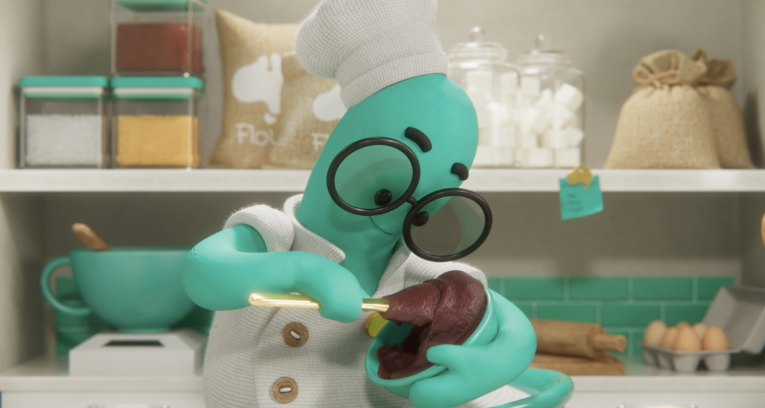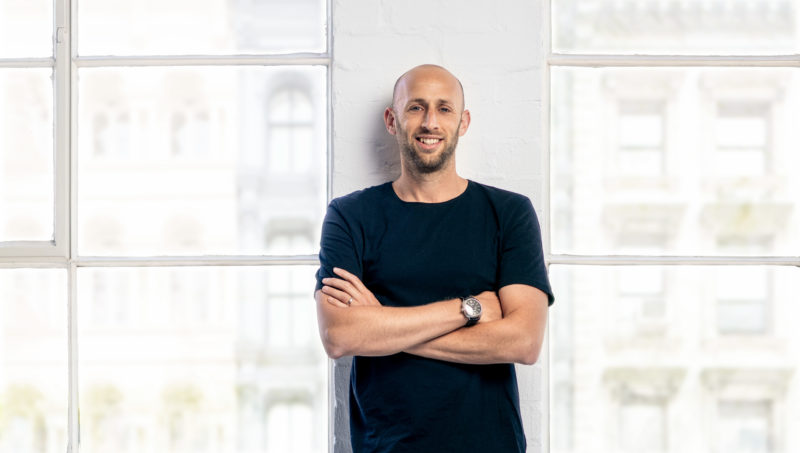Cheat Code: Bragging rights to set challenger brands apart
Surfacing the magic behind the scenes gives consumers a story to tell themselves when they consider your brand against market-leading competitors, says Dan Monheit, CEO of Hardhat.
Of all the definitions of ‘brand’, my favourite is ‘the story a customer gets to tell themself’. It’s simple, relatable and as marketers, it gives us plenty to work with. While inertia, psychological safety and outsized distribution all favour market leaders, the ability to provide customers with more interesting, engaging and affirming stories to tell themselves is the hallmark of many a great challenger brand.
However, this is not an early 2000s-era puff piece about the importance of brand storytelling or the fanciful notion of ‘brand love’. I’d sooner scratch my own eyes out than read – let alone write – another piece on either topic. For a start, I’m far too pragmatic. So, let’s deal with some pragmatic realities.
By now, we all know that market leaders get disproportionately high returns on their marketing spend. This means that if you’re anyone but a market leader, by definition, your returns on marketing spend are disproportionately low. Add the fact that you probably (read: definitely) had less funds to invest in the first place than the market leader, then it’s clear that the vast majority of brands are fighting a losing battle when they run the standard category playbook.
In place of spend, challenger brands must find other sources of disproportionate return. Uncovering the right story and telling it repeatedly can be one of them.

During Covid, I was one of the estimated 1.2 million marketers who took an online course with Professor Mark Ritson. It was enjoyable, and many of his quips still sit with me today. At the start of one session, he posited that the first day you walk into an organisation as an employee, particularly as a marketer, is the last day you ever truly see that brand as the customer does.
It reminded us that we tend to become obsessive and institutionalised, unable to imagine a world where average Australians aren’t discussing sauce viscosity, asymmetrical tyre tread and influencer alignment over the dinner table.
It’s a brilliant observation, but I believe there’s a second part. The longer you’re inside a brand, the more you lose sight of the magic. Magic that is so interesting and compelling, or could be made to be with the right creative wrapping, that its appeal and value would penetrate deep into the customer base. If only they knew it existed.
Finding the magic
As humans, we’re not very good at determining the objective value of things. Instead, we use proxies such as price, brand and retail experience to ascertain if something is worth the money. One of the most potent yet underutilised proxies marketers have for creating perceived value is effort.
As a society, we love effort. We recognise and praise it. Effort is unanimously virtuous and romanticised. We tell our kids to put the effort in, and the outcome will take care of itself! After all, effort is its own reward, right?
Research from the field of behavioural science has proven that humans are so enamoured with effort that it can consistently short circuit our thinking. ‘Effort bias’, as it’s known, speaks to how we subconsciously assess an item’s quality based on how much time and effort we perceive has gone into creating it. The more effort we perceive as going in, the more value we believe emerges.

Surfacing the effort
Therefore, asking ‘What is inside that deserves to be out?’ can be especially potent for challenger brands looking to steal, not protect, market share. By giving people a better story to tell themselves, they’ll have a better reason to reach for you over the tried and tested competition. So, where do you look?
The magic could be hiding anywhere, from your origin or product story to how you source your ingredients or enable your staff. If you’re in business, there’s a very high likelihood that someone, somewhere, is putting in a level of effort far beyond what anyone on the outside could imagine. It’s up to you to find and surface it.
Challenger brand history is filled with brilliant examples of brands making something out of nothing. Turning internal workings into external value creation. Recognising that if it’s not visible, it’s not valuable.
Sometimes, making it visible is very, very literal. Dyson celebrates the effort that went into perfecting their product at every customer touchpoint. Anyone who’s been within 100 meters of a Dyson store or website will be familiar with the five years and 5,126 prototypes it took to launch the world’s first bagless vacuum cleaner.

Matilda Bay Brewing invites you to discover the journey to perfection by telling the tale of each of the 27 almost-perfect beers their meticulous Master Brewer rejected in pursuit of perfection. Another effortful mention is the way Matilda Bay heroes the tasting notes of each beer. It’s akin to feeling compelled to buy a bottle of whisky at the end of a distillery tour after admiring the meticulous, nuanced effort required to produce a bottle.
Of course, it’s not just whisky. Four Pillars Gin does a fabulous job of surfacing its journey to becoming an award-winning gin distillery. Their narrative demonstrates their dedication, professionalism and family values. For example, heroing their custom-built stills, made by CARL of Germany, the world’s oldest still producers and then naming them after the founder’s mums and longstanding employees. They also highlight their access to local native botanicals like lemon myrtle and Tasmanian pepper and their signature use of whole fresh citrus in every gin to separate themselves from rival gin manufacturers.
Spotlight on staff
Showing the lengths, creativity, and sheer effort your staff makes in search of perfection can trigger effort bias. In 2013, Intel produced a series of four very clever ‘Sponsors of Tomorrow’ commercials celebrating Intel’s heroes, which went viral on YouTube. ‘Our Rock Stars Aren’t Like Your Rock Stars’ featured an awkward, middle-aged super nerd strutting through a corporate office signing autographs for his adoring, cheering fans.
The super nerd was none other than Ajay Bhatt, the co-inventor of the USB stick. The ‘Our Jokes Aren’t Like Your Jokes’ spot shows Dr Mario Paniccia, Intel’s former Photonic’s research director, pranking a colleague with a numerical joke that we mere mortals have no hope of ever understanding. The campaign was creative and attention-grabbing, highlighting how different, specialised and valuable Intel’s people are.
Cashmere brand Naadam celebrates the story of college friends Matthew Scanlan and Diederik Rijsemus travelling to Mongolia’s Gobi Desert and becoming friends with the local herders. After witnessing how traditional cashmere traders drove up prices and took the profits, the duo realised they could cut out the middlemen, pay their herder friends more, and sell luxury clothes for less. This kind of differentiation lodges in your mind and makes you feel good about buying their product. Naadam’s origin story is still central to their marketing. The True Story of Naadam video has over 1.4 million views on YouTube, and has been retold repeatedly through media organisations, from Forbes to Fortune magazine.
Sometimes, showcasing the extra effort can be more suggestive. Our agency developed the ‘Green’s Behind The Scenes’ platform for Australian baking brand Green’s. After realising all the extra effort they put into the product development process, we created an animated character (Greeny) who lives inside the box, continually experimenting with hundreds of different versions until he gets it right. As soon as the TVCs featuring Greeny hit the airwaves, we saw sales grow more than ten per cent.

Greeny
Another classic ‘abstraction’ example is the classic ‘Fisherman versus Bear’ from John West. While we know that John West’s sourcing team are not actually wrestling bears for the freshest salmon and tuna, we certainly get the sense that they go further than anyone else in their pursuit.
It’s critical to give consumers a better story to tell themselves if you want them to buckle into your aeroplane seat, crack open your beer or fill out your insurance application form. Whether the source of that story springs from your product, process, pedigree or people, it starts by hunting for the magic inside that deserves to be famous in the world.

Dan Monheit is CEO of Hardhat.

